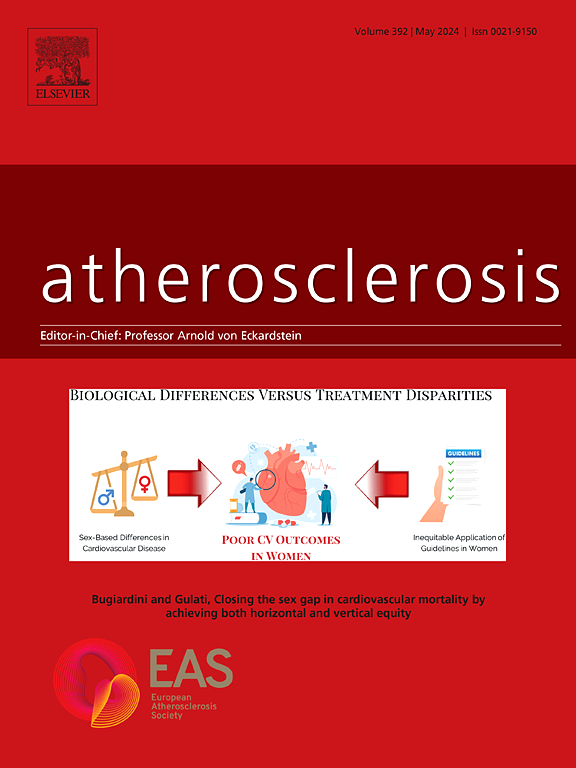Inhibition of bone morphogenetic protein 4 alleviates angiotensin II-induced abdominal aortic aneurysm by reducing inflammation and endothelial-mesenchymal transition
IF 4.9
2区 医学
Q1 CARDIAC & CARDIOVASCULAR SYSTEMS
引用次数: 0
Abstract
Background and aims
Abdominal aortic aneurysm (AAA) is one of the most common fatal macrovascular diseases worldwide which pathogenesis is still not well clarified. In this study, we systematically investigated the alternations of endothelial cell (ECs) functions and phenotypes by single-cell RNA sequencing in angiotensin (Ang) II-induced AAA mice models.
Method and results
According to 10 × single-cell sequencing analysis, we revealed that ECs inflammation and endothelial-mesenchymal transition (EndoMT) were involved in the progress of Ang II-induced AAA. Three types of ECs, including Mature ECs (uninjured ECs), EndoMT ECs and Injury & inflammation ECs successively emerged during the progression of AAA. By using pseudotime-trajectory analysis, we speculated bone morphogenetic protein 4 (BMP4) as a candidate gene, participating in Ang II-induced AAA by regulating EndoMT and vascular inflammation. We found that inhibition of BMP4 ameliorated EndoMT and vascular inflammation in Ang II-induced AAA in vivo. In addition, we found that exogenous BMP4 directly promoted the phenotypic transition, inflammation, cell migration and invasion of mouse aortic endothelial cells via PI3K/AKT/mTOR pathways in vitro. Finally, Protein-protein interaction (PPI) analysis and co-immunoprecipitation (Co-IP) revealed that biglycan (BGN) directly combined with BMP4 and promoted the conversion of EndoMT.
Conclusion
Our findings firstly revealed a critical role of BMP4 in AAA progression, which promoted disease progression by inducing EndoMT and reprogramming ECs from anti-inflammatory to proinflammatory phenotype.

求助全文
约1分钟内获得全文
求助全文
来源期刊

Atherosclerosis
医学-外周血管病
CiteScore
9.80
自引率
3.80%
发文量
1269
审稿时长
36 days
期刊介绍:
Atherosclerosis has an open access mirror journal Atherosclerosis: X, sharing the same aims and scope, editorial team, submission system and rigorous peer review.
Atherosclerosis brings together, from all sources, papers concerned with investigation on atherosclerosis, its risk factors and clinical manifestations. Atherosclerosis covers basic and translational, clinical and population research approaches to arterial and vascular biology and disease, as well as their risk factors including: disturbances of lipid and lipoprotein metabolism, diabetes and hypertension, thrombosis, and inflammation. The Editors are interested in original or review papers dealing with the pathogenesis, environmental, genetic and epigenetic basis, diagnosis or treatment of atherosclerosis and related diseases as well as their risk factors.
 求助内容:
求助内容: 应助结果提醒方式:
应助结果提醒方式:


